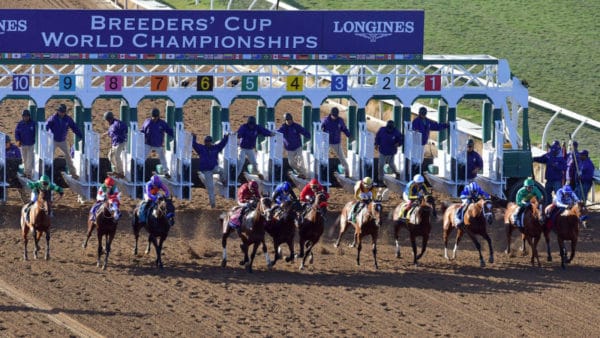
When we talk about the biggest horse races in the world, the Breeders’ Cup always gets an honorable mention, and there is a good reason for that.
Maybe outside of die-hard horse racing enthusiasts, the general public instantly thinks about the Kentucky Derby and the Triple Crown races whenever they hear of horse racing. However, the Breeders’ Cup is also very popular among casual horse racing enthusiasts.
So, what makes this horse racing event so special, and probably one of the biggest horse races in the world that gathers the attention of millions of people?
Let’s break down why this is one of the most popular horse racing events in the world.
The Breeders Cup
The Breeders Cup is a Thoroughbred horse race formed in 1984, and throughout the years it has grown into the most popular horse race in the world.
There’s no doubt that the Breeders’ Cup Classic is the race that gathers the most attention of the Breeders’ Cup each year.
But not unlike the Kentucky Derby, Preakness Stakes, and Belmont Stakes, the Breeders’ Cup is a group of races.
Each race at some stage in the 2-day span determines a World Champion in a specific class, sporting a weight that makes every one of the 14 races very exciting.
For example, the Breeders’ Cup Juvenile offers audiences an observe the satisfactory two-year-olds inside the international and a sneak peek at the pinnacle contenders for the following year’s Kentucky Derby.
We’ll get into money a little bit later, and even though the prize purse plays an important role in the popularity of the event, The Breeders’ Cup will still be a popular event even if the amount of money offered is lower.
You can check all the past winners of the event here: twinspires.com/breeders-cup/winners
Age in the Breeders Cup
Despite the Triple Crown races being the most popular in the world, they no longer represent the global footprint of the sport, but their age limits also play a limiting aspect in finding out the fastest horse in the world.
The trio of the Kentucky Derby, Preakness Stakes, and Belmont Stakes all are restrained to 3-year-old thoroughbreds simplest. Even though the third year of the horse’s life is considered a timeframe when most horses are in their “prime”, this leaves out a large group of horses that are four, five, and even six years, that can still race.
A majority of the Breeders’ Cup’s races do not set an age restriction, however, they do have a limit. All nine races starting up on November 2 are for horses ages three and up. This creates greater numerous subjects at the various beginning gate and permits horses to enhance through the years, rather than blowing their one shot at a race.
For instance, 18 horses over the records of the Breeders’ Cup have won one in all its race two times. Most significantly, Tiznow took the Classic in consecutive years from 2000 to 2001. This is not possible for the Triple Crown Races since a horse has only one chance to participate in such an event.
Big Prize Purse
You can’t talk about horse racing without mentioning money.
While commonly this communication is reserved for making bets and the ridiculous payouts that you may go away from a track with, a large part of the Breeders’ Cup’s popularity comes from the big prize purse that is available for the winners.
The 2019 Breeders’ Cup, offered a massive prize purse of $28 million scattered across all 14 races in the two-day event. In 2021 the Breeders’ Cup handed out $31 million in purses and awards for the horses that performed well. The Breeders’ Cup Classic carried the fee cash-wise, conserving a handbag of a whopping $6 million.
For reference, the prize purse for the 2019 Kentucky Derby was $3 million.
Now, purse size isn’t always the whole thing in horse racing. The Saudi Cup in February 2020 had a complete purse of $20 million, but it nevertheless would not hold a candle to the significance of the Breeders’ Cup.
 Gearfuse Technology, Science, Culture & More
Gearfuse Technology, Science, Culture & More


